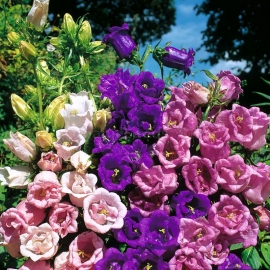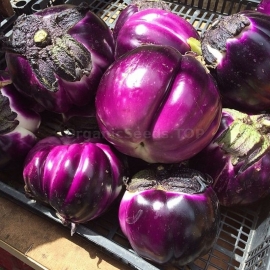
«Rainbow Bells» - Organic Campanula Seeds
1.14 €
This rare, heavy blooming selection features large and stunning, blue, pink, or white, double, dense flower balls. Masses of bells are produced in an astonishing range. Flowers appear all summer long and are from 60-90cm high (2-3ft).
-
Organic Campanula «Rainbow Bells»
This rare, heavy blooming selection features large and stunning, blue, pink, or white, double, dense flower balls. Masses of bells are produced in an astonishing range. Flowers appear all summer long and are from 60-90cm high (2-3ft). They will grow in almost any position whether sun or semi shade.How to Grow
Campanula can grow from seed or from rhizomes. The tiny seeds should go in prepared soil in spring after all danger of frost has passed. Make sure to keep seedlings moderately moist when caring for bellflowers. To plant rhizomes, sever them from the parent plant at a root node and bury the roots in the soil.
Bellflowers perform best in USDA plant hardiness zones 4 and up but may grow in zone 3 with some protection. They are cold hardy plants that are useful specimens in areas with hard winters. They require full sun for best flower production, and well-drained soil with moderate moisture. Once established, bellflower plants can tolerate periods of drought. Soil conditions for growing bellflowers can be any pH range, including highly acidic.
Caring for bellflowers does not require any expertise. As with most perennials, they are hardy plants that tolerate quite a lot of extreme weather and arid conditions. Bellflower care includes deadheading to promote more blooms and a longer lasting display. You can also cut it down to the ground in late winter to early spring to rejuvenate the plant. Also, some varieties of bellflower have invasive potential and seed heads need to be removed before they spread.
Products Viewed Before
Product code: 969
1.14 €
This is the medium-early variety. Vegetation period from shoots to technical ripeness is 95-120 days. The shrub is tall, with a height of 70-100 cm. The fruits are large, oval in shape, in biological ripeness of red-violet color, weighing 200-300 g.

